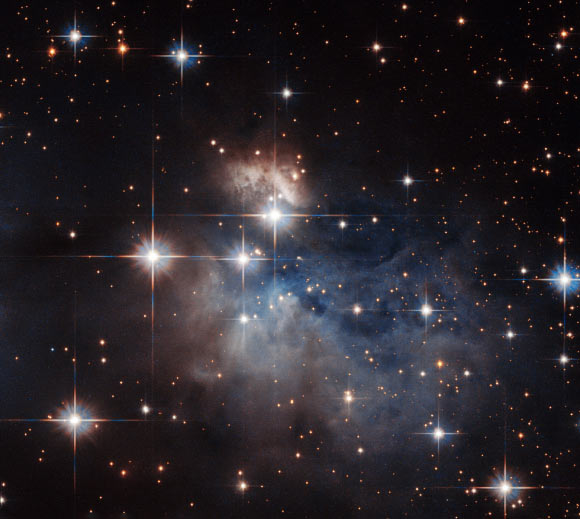The subject of this Hubble image is Hen 2-80, a star located in the constellation Crux at a distance of approximately 2,300 light-years away from Earth.

The emission-line star Hen 2-80 (center) and surroundings. Image credit: NASA / ESA / Hubble / Judy Schmidt, www.geckzilla.com.
Hen 2-80, also known as ESO 95-7 and IRAS 12196-6300, is a so-called emission-line star.
This star displays prominent emission lines, meaning that its light, dispersed into a spectrum, shows up as a rainbow of colors marked with a characteristic pattern of dark and bright lines.
The characteristics of these lines, when compared to the ‘fingerprints’ left by particular atoms and molecules, can be used to reveal the chemical composition of the star.
Under 10 million years old and not yet burning hydrogen at its core, unlike our Sun, Hen 2-80 is still in its infancy.
Further evidence of its youth is provided by the presence of reflection nebulae.
These hazy clouds, pictured floating above and below the star, are created when light from a star reflects off a high concentration of nearby dust, such as the dusty material still remaining from Hen 2-80’s formation.
This image was taken by the Wide Field Camera of Hubble’s Advanced Camera for Surveys (ACS).
The image was made through a near-infrared (F814W) and a wide V-band (F606W) filter.
Astronomer Judy Schmidt submitted a version of the image to the Hubble’s Hidden Treasures image processing competition.







